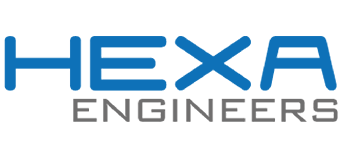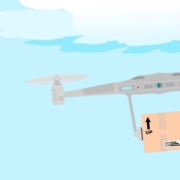What challenges does Artificial Intelligence face in Industry 4.0
AI is revolutionizing the schemes of the Industry as it was known until very recently. It is, without a doubt, one of the most important drivers of the current Industry 4.0 framework, as is the case with machine learning, which allows the predictive analysis it provides to be one of the milestones most used to boost business industrial. Thanks to the combination of both technologies, an industrial company is able to detect errors, monitor production quality in real time and optimize the supply chain, with a detail unthinkable until recently. Those companies that have invested in the implementation of these technologies are being able to be more competitive with respect to their competitors in both quality and costs. But it is also true that the adoption and implementation of Artificial Intelligence entails a series of challenges that must not be lost sight of. After all, it is a concept in constant evolution and that –although it offers extraordinary results– is in its first years of existence. For this reason, company systems managers and consultancies specialized in digital transformation in the industry must go hand in hand on a path that promises exciting. Let’s see what some of those challenges are.
Real-time response need
Manufacturing and its Industry 4.0 predictive applications are highly sensitive to latency or response time. So much so that if this latency is higher than desired, anticipating possible problems that may arise is not so easy. An ultra-fast response is necessary. The point is that an advanced system cannot afford to interact with the cloud, since the time for data processing and obtaining the information is excessive. For this reason, the response must be in real time, in milliseconds. So there is no other option than data processing is local and to be able to address it it is essential to have the appropriate IT infrastructure. Both the control systems and the decision-making need to be carried out through edge computing. An intelligent production requires that predictive models can be implemented in each of the sensitive terminals of the process and that they respond in real time and tightly.
Legacy systems
It is very common to find that in an industrial company there are equipment of all kinds, a fact that makes the interoperability of the system difficult. The market offers technologies, machines and components so varied that they are most often incompatible with each other when connecting them, as required by Industry 4.0. Although it is also true that the Industrial Internet of Things (IIoT) does not yet have established frameworks and standards, the main problem that must be solved is that of legacy machines. The ecosystem of a current industry has to have compatible components that use rules to connect to PLCs, SCADA, MES or ERP and in that sense, everything indicates that the OPA AU protocol is emerging as the most accepted in the modeling of Industry 4.0 data and communication. In any case, in order to be able to refine in a process as specialized as it is to find out how the renovation and adaptation of the system is to be carried out, companies need the advice of specialists. Especially when it comes to investments that are going to be so critical.
Access and use of data
The complex environmental conditions in which a production plant may find itself are not always the best allies when it comes to collecting the most reliable data. Furthermore, manufacturing may take place in a space remote from the site where the data is collected and processed. On the other hand, the company may object to storing data in the cloud for security reasons and a local solution has to be devised. The point is that all these difficulties may require ad hoc engineering work that is capable of overcoming all these obstacles. This adequate channeling of the different actors that provide the data forces IT and OT teams to operate in an aligned manner and under the planning of a specialist in both areas. In this sense, HEXA Engineers is a consulting firm specialized in both IT and OT and, therefore, capable of tackling projects of such depth with comprehensive expertise.

Multidisciplinarity aimed at Artificial Intelligence
Industrial projects with the presence of Artificial Intelligence make it necessary for multidisciplinary teams with experience in data management, algorithms and machine learning to be saved. This forces the companies that undertake them to hire experts in Artificial Intelligence and machine learning, but the relative scarcity of them in the market makes it not as simple a task as it happens with other positions. Still, there are automated machine learning tools that OT experts can take advantage of to build predictive models without necessarily requiring data scientists on staff. The new AutoML platforms automate up to 100 percent of the AI and machine learning development workflow, using an AI engine to automatically discover meaningful patterns and create ML-ready feature tables from relational, operational, temporal data , geographic location and text.
Distrust of Artificial Intelligence
More than 80 percent of industrial companies suffer from downtime, at the enormous cost this entails. Typically, OT experts have relied, and still do in great numbers, on their experience and instinct rather than an algorithm. However, just as the industry ended up giving in to the benefits of having robots, it cannot turn its back on Artificial Intelligence and machine learning any longer. After all, they are technologies that are not only more than proven efficient, but do not mean that the company’s technology experts are still as necessary as ever. All that is necessary is an update that can be given in the best terms with specific training thanks to comprehensive consultancies such as HEXA Engineers.









